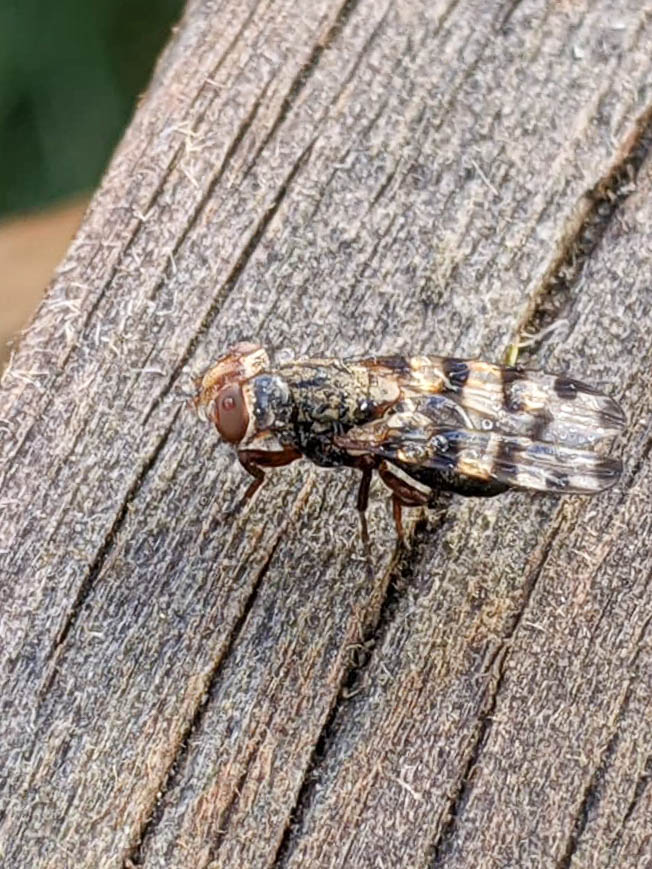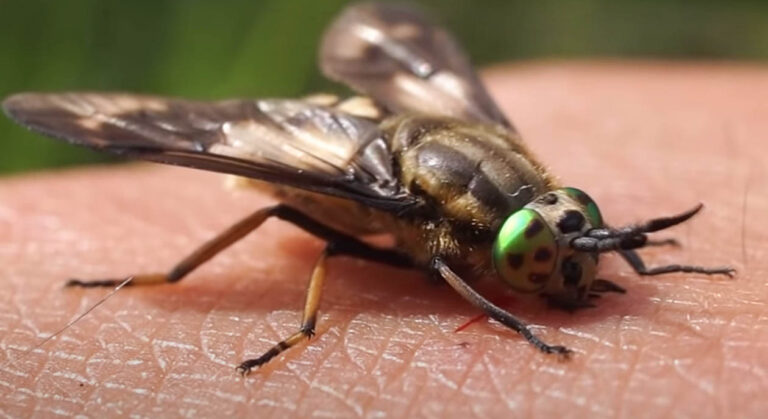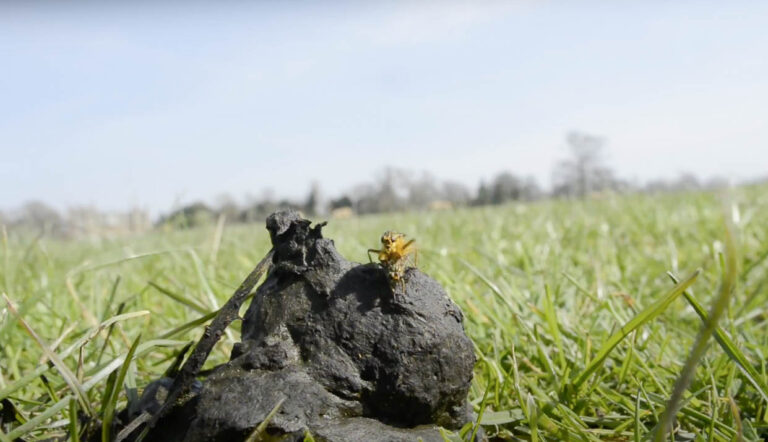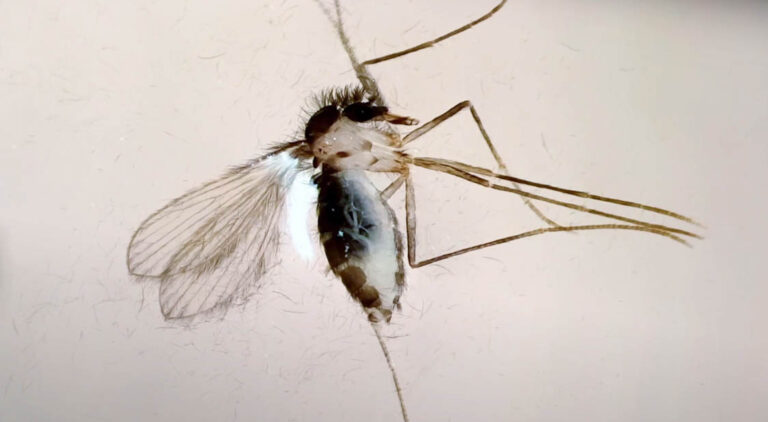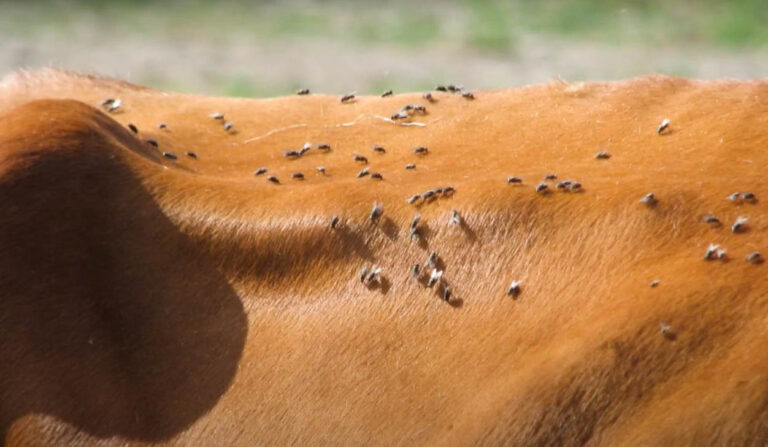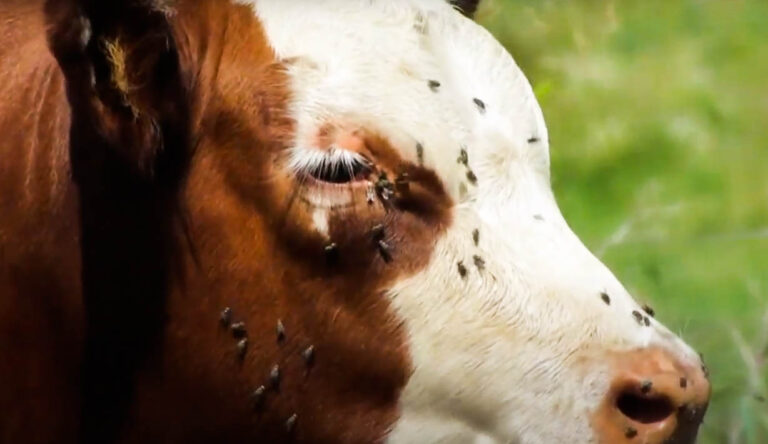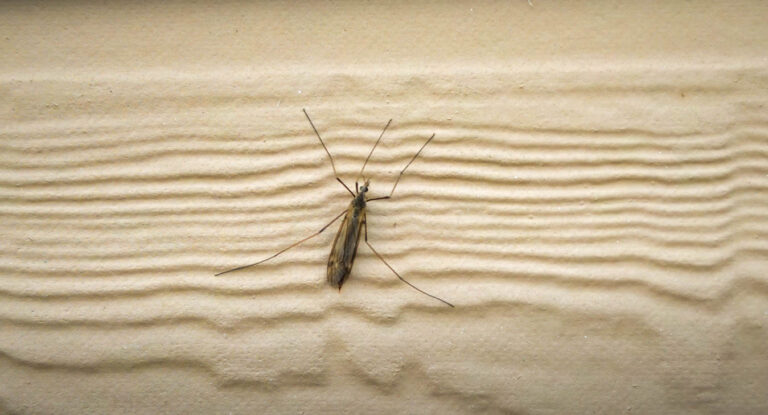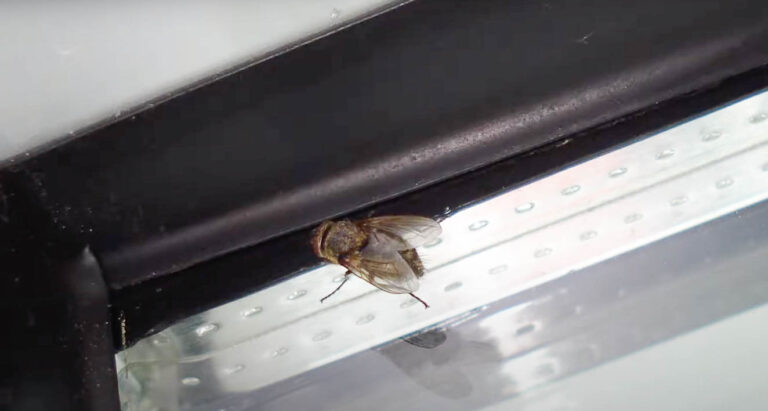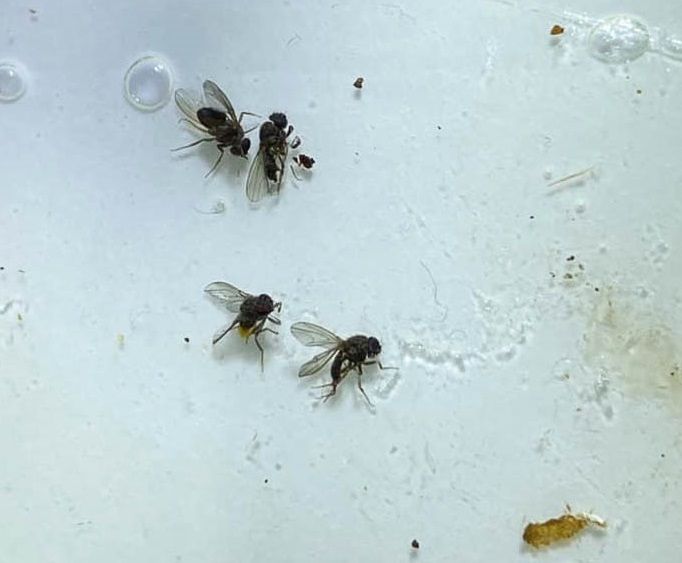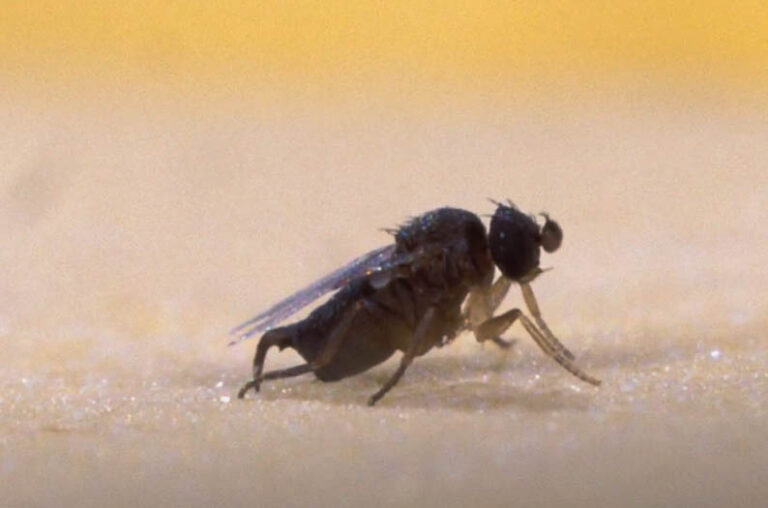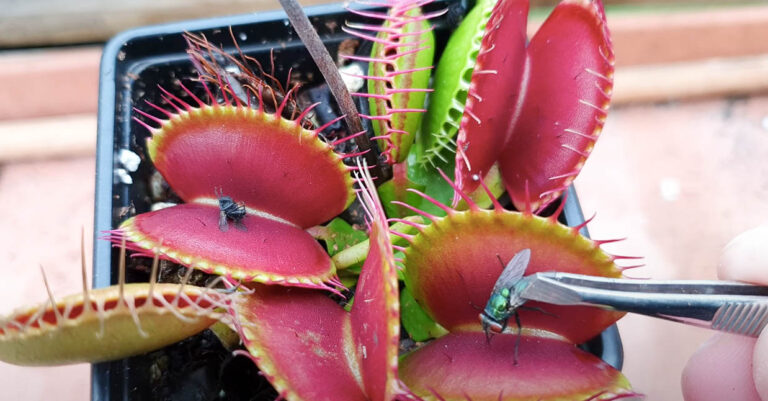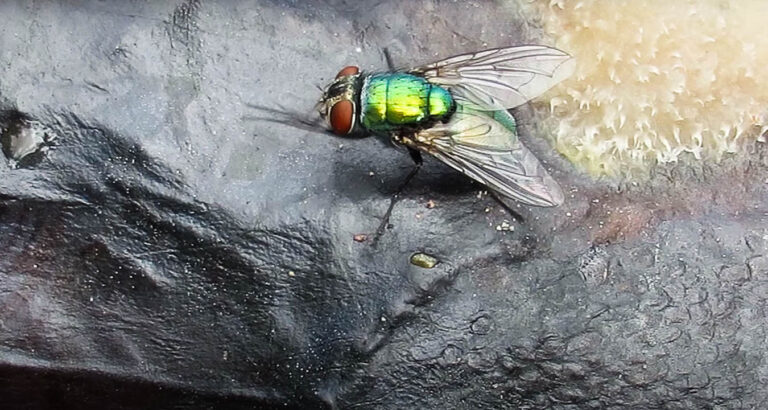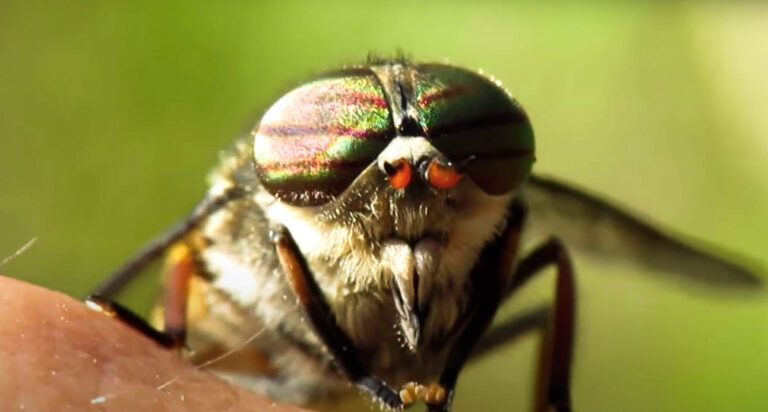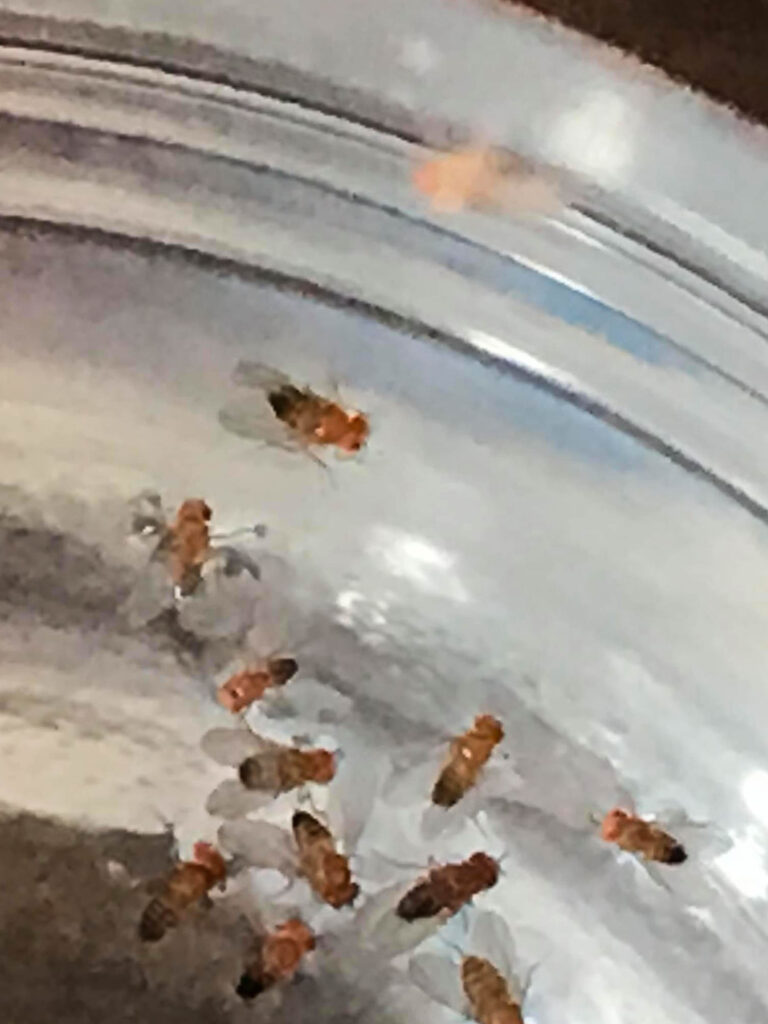About the House Fly
About the House Fly
Appearance
House flies (Musca domestica) are amongst the most common flies buzzing around, comprising around 90 percent of all flies that occur in human localities. As such, many of us are already excellent at identifying these annoying pests. Typically, they’re around 5 to 7 mm (0.2 to 0.3 in) in length. Their body is a dull grey, with notable areas of dark-yellow on the abdomen and in lines along the thorax. Of particular note, are their large compound eyes, each containing approximately 4,000 facets. Unlike other similar flies, houseflies have sponging or lapping mouthparts, meaning they are unable to bite. They’re often seen walking on walls or sticking to windows. This adhesive ability is achieved via surface-tension of a secretion from their minuscule glandular pads, known as pulvilli, located under each foot claw.
Naturally, the house fly also has a set of wings, found on their back. A shell does not cover these wings. Their body is also covered in small hairs. From their head, there are two antennae, which accompany the eyes for sensory perception.
Behavior
House flies are primarily diurnal, spending their days searching for food, and nights at rest. Adult house flies are carnivorous, preferring foods such as animal matter, carrion, and feces. However, they will also eat milk and sugary or decomposing vegetable matter. Their food must be liquid, as mentioned, their mouths are unable to bite. On occasion, they may become bloodsuckers, though this is rarely observed. With the rise of humans, house flies have become exceedingly common. They will breed in specific locations and then can fly several kilometers in their life. Their long-standing relationship with humans has rightfully earned them a reputation as a transmitter of disease. Indeed, many parasites and bacteria are passed along via flies, such as Giardia lamblia, cholera, salmonellosis, and typhoid.
Life cycle
House flies, like most other insects, lay eggs. Each female is capable of laying around 500 to 1000 eggs in her lifetime, typically in batches of around 1000 eggs. Eggs are slender and whitish in color. They are usually laid in a food source, such as feces, carrion, or food waste. From out of the eggs, maggots will hatch in a matter of days, living and feeding on their new home. The maggots are identifiable as a white, legless, segmented larva: the body tapering at the mouth. From this point, the maggots will grow rapidly. Within two days they will have doubled in size, molting their outer exoskeleton.

Maggots typically molt a total of three times during development, increasing in size with each cycle. Following the third molt, larvae burrow into their home and enter the pupal stage. Their skin darkens and hardens; while inside the protective shell, the process of transforming into a fully-formed house fly begins. After it has finished developing, the house fly breaks out of the shell. From this stage, they have around a three-month lifespan. However, most house flies don’t make it a month due to the abundance of predators.
Habitat
In the thousands of years that humans and house flies have coexisted, they’ve come to rely on us for food, shelter, and warmth. They are found all over the world, from temperate to tropical locations. They prefer warm areas and will shelter and hibernate during the winter, or seek human habitation. House flies are found in the greatest abundance in warm, developing countries. There the warm environment speeds up the development period and increases the turnover of generations. However, house flies are still prevalent in the United States and Western Europe. They are most often found near feces or in unclean areas rich in possible food sources. As such, bins and other areas with food waste are a common site for house flies.
